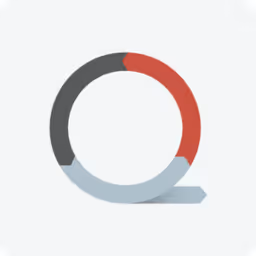The advertising world is changing as we enter an era where third-party cookies disappear. Google announced its plans to forego cookies and transition into what they call Privacy Sandbox by the end of 2024. It's expected to upend some aspects of ad tech and advertising, making it harder to identify and target consumers across the web.

What is privacy sandbox?
Privacy Sandbox initiative is a set of web standards led by Google that websites must follow to access user information through the Chrome browser. Since Chrome accounts for about 49% of the total browser market share, it has a major impact on how technology partners, publishers, and advertisers interact with users and websites.
Google states that the purpose of the Privacy Sandbox is to maintain user privacy while facilitating online advertising. They'll do this by only sharing parts of a user's private information (or aggregating it) without using a third-party cookie. It will also reduce cross-site and cross-app tracking.
While Google expects to launch the Privacy Sandbox by the end of 2024, many disagree with the initiative's effectiveness. The Interactive Advertising Bureau (IAB) released a report stating that Privacy Sandbox does not work. AdExchanged reported that Privacy Sandbox does not support the most significant advertising tactics, "including lookalike modeling, competitive separation on the page, audience creation, video advertising, frequency capping, and most forms of ad reporting."
Who does it impact?
Brands that run large ad campaigns across multiple publishers and rely on programmatic buying outside major walled gardens (i.e., Facebook, TikTok, etc.) will be most impacted. This is because the most significant impact is coming to advertisers that rely on third-party cookie data for targeting across websites.
If most of your advertising is on Google, Meta, and TikTok - you'll feel an impact on your performance and reporting. Still, it won't be apocalyptic (you've already experienced the worst with iOS 14.5).
However, if you're a or rely heavily on a programmatic DSP, media attribution partner, or publisher - you should start preparing for how you'll adapt to a Privacy Sandbox world.
Programmatic DSP & Publishers
Many of the audience targeting and optimization metrics you use will be going away or unreliable. You'll be forced to rethink how you reach your optimal audiences, optimize delivery, and ensure brand safety.
Media Attribution Partner
With much of the cross-site and cross-app tracking functionality going away, attribution partners will be forced to adapt their system for determining the effectiveness of campaigns. You may see more campaign modeling for reporting and a greater reliance on data partnerships to ensure the platform still has access to the data it needs to report accurately.
How can you prepare?
We will see much change in the advertising industry as Chrome adopts the Privacy Sandbox. Since the goal is to implement the initiative by the end of 2024, we recommend being prepared as soon as possible (you don't want to scramble to figure this out in Q4, especially if you're a retailer or consumer goods company).
Ask your Media Agency
You should get started by asking your media agency. They should already be thinking about this and have a viewpoint on what they will be doing. The response might be that there isn't much to be done because your campaigns aren't big enough to be impacted, or you aren't using channels that will be a significant change, but it's still essential to plan and create a framework for your future as you grow.
Review Your Data
I also recommend you review your data, channels, and audience segmentation. Understand clearly what data sources will be impacted, which channels will be degrading, and how you'll segment your audiences post Privacy Sandbox.
Collect First-Party Data
Start collecting first-party data. You should have an initiative to capture as many email and SMS subscribers as possible. Consider a CDP to help you build a better understanding of those users and help you build your own audiences.
Create a Measurement Framework
Create a clear measurement framework. Advertising measurement is going to be more complex than ever before. Not only will we be impacted by the changes being implemented by Privacy Sandbox, but consumer behavior online continues to shift, changing how we view campaign results. You need to understand the KPIs that matter to your campaigns and how you'll measure them moving forward.
Understand Your Audience
Lastly, you need to truly understand your audience. As we start to lose our ability to rely on interest-based audience segmentation, it'll be more important to understand what influences our customers and how they navigate the customer journey. Contextual advertising and geographic targeting will become essential media strategies, and the better you know your audience, the more effective you can be.
TL;DR
The advertising landscape is set to transform with Google's move to eliminate third-party cookies by the end of 2024, introducing the Privacy Sandbox initiative.
This change will significantly affect how advertisers target and track consumers across the web, particularly impacting brands reliant on programmatic advertising outside of major platforms like Google and Meta. The initiative aims to balance user privacy with advertising needs by limiting the amount of shared user data.
Advertisers and publishers will have to adapt to these changes by reassessing their data strategies, embracing first-party data collection, and refining audience understanding and campaign measurement to navigate the post-cookie era effectively.





